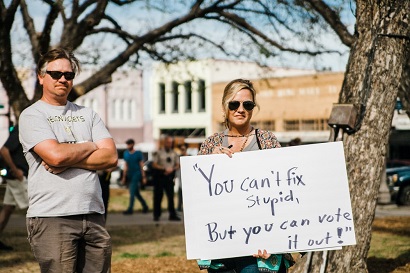We started doing it in 1981
The Oregon Legislative Fiscal Office has done an issue review on Oregon’s Vote by Mail. The pandemic has many voters and election poll workers concerned about the health risks posed by in-person voting. Submitting a ballot through the mail or a ballot drop site has become an appealing alternative. In Oregon, it appears to have marginally increased voter turnout.
The paper reviews the history of how we got to the motor-voter system, how it works and how to use it. What may not be so apparent is lying on the registration form is a felony, punishable by five years in prison, a $125,000 fine, and deportation for undocumented immigrants.
A comparison of polling place election in 1992-1998 with vote-by-mail elections held 2000-2018 indicates an improvement in voting. The Primary Election is typically not quit half of those eligible voting in the General Election. Primaries in polling places (1992-1998) were 39.6% that increased in 2000-2018 to 43.9%. General Elections in polling places were 70.4% that increased to 76.1%. Other elections show similar increases. Based on the data, Oregon’s vote by mail system appears to have marginally increased voter turnout 2-5%, depending on the type of election.

The final topic,
Potential Areas for Review, may be the intent of the report. Are these suggestions intended for legislative proposals?
- Same-day voter registration: As of June 30, 2019, 21 states plus the District of Columbia have adopted same-day voter registration which allows any qualified resident of the state to register to vote and cast a ballot on election day. Oregon used to have same-day voter registration, but voters repealed it in 1986 through an initiative petition that amended the Oregon Constitution (Ballot Measure 13). Today, new voters must register to vote no less than 21 days before election day in order to vote in that election.
- Seven-day processing requirement: Oregon law prohibits counties from processing ballots more than seven days prior to election day. An analysis of the consequences, both positive and negative, of modifying this timeframe should be conducted prior to any change.
- Signature verification process: Oregon voters prove their identity through signature verification of voter registration cards. However, the capture quality of the signatures obtained from the Oregon DMV is sometimes not clear, which can lead to signature mismatches in instances where the voters’ signature has changed.
- Accommodations for voters: All Oregon voters must submit a paper ballot. However, some voters may have challenges that make it difficult for them to submit their ballot through the mail or a ballot drop site. There may be electronic options to assist such voters.
- Ballot submissions: Under Oregon law, ballots must be received by county elections office by 8:00 p.m. on election day. The postmark on the return envelope does not matter. Because counties do not certify election results until 20 days after the election, there is sufficient time to count ballots postmarked on election day, even if not received on time.
- Oregon Centralized Voter Registration (OCVR) technology: OCVR was developed in 2005 to comply with federal law. Modernizing OCVR to be able to produce better statistical information – such as the frequency and range of new registrations, the number of address changes, the frequency of registration removals, the frequency of cross-country moves, the rates of undeliverable mail ballots, and the rates of ballot returns – would increase the ability to develop forensic tools to identify statistical anomalies.
What was lacking from the report was how identification is verified and improvements to that process, or investigating false ID. Whether or not these suggestions will prove to be less fraud and a more reliable system remains to be seen.
--Donna Bleiler| Post Date: 2020-10-13 17:27:21 | Last Update: 2020-10-13 17:45:10 |







